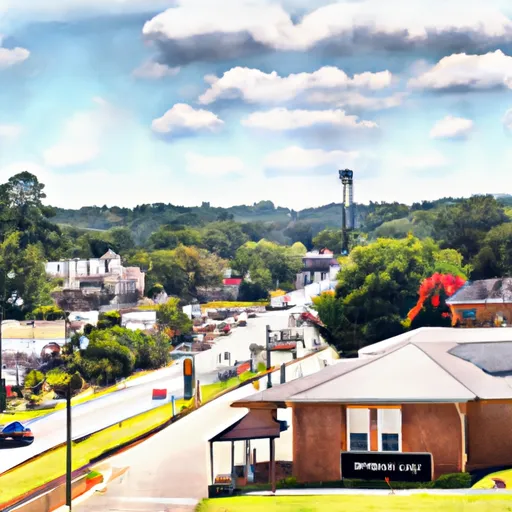-
 Snoflo Premium
Snoflo Premium
Get unlimited access to all our content
With no Ad interruptions! - Start Your Free Trial Login with existing account
Danielsville
Eden Index
Climate
8.0
•
Recreation
3.2
•
Community
0.8
•
Safeguard
4.5/10

Danielsville is a small city located in Madison County, Georgia. The climate in Danielsville is typical of the southeastern United States, with hot summers and cool winters. The area receives an average of 48 inches of precipitation per year, with the majority of precipitation falling during the summer months. The hydrology constituents of the area include the Broad River and tributaries such as the South Fork Broad River and the Middle Fork Broad River. Outdoor recreation opportunities in the area include hiking and camping in the nearby Chattahoochee National Forest, as well as fishing and boating on the Broad River. The city also hosts an annual fall festival, offering a variety of family-friendly activities.
What is the Eden Index?
The Snoflo Eden Index serves as a comprehensive rating system for regions, evaluating their desirability through a holistic assessment of climate health, outdoor recreation opportunities, and natural disaster risk, acknowledging the profound impact of these factors on livability and well-being.
Climate Health Indicator (CHI): 8.0
Danielsville receives approximately
1231mm of rain per year,
with humidity levels near 85%
and air temperatures averaging around
16°C.
Danielsville has a plant hardyness factor of
8, meaning
plants and agriculture in this region tend to thrive here all year round.
By considering the ideal temperature range, reliable water supplies, clean air, and stable seasonal rain or snowpacks, the Climate Health Indicator (CHI) underscores the significance of a healthy climate as the foundation for quality living.
A healthy climate is paramount for ensuring a high quality of life and livability in a region, fostering both physical well-being and environmental harmony. This can be characterized by ideal temperatures, reliable access to water supplies, clean air, and consistent seasonal rain or snowpacks.
Weather Forecast
Streamflow Conditions
Savannah
Area Rivers
Savannah
Snowpack Depths
Savannah
Reservoir Storage Capacity
Savannah
Groundwater Levels
Recreational Opportunity Index (ROI): 3.2
The Recreational Opportunity Index (ROI) recognizes the value of outdoor recreational options, such as parks, hiking trails, camping sites, and fishing spots, while acknowledging that climate plays a pivotal role in ensuring the comfort and consistency of these experiences.
Access to outdoor recreational opportunities, encompassing activities such as parks, hiking, camping, and fishing, is crucial for overall well-being, and the climate plays a pivotal role in enabling and enhancing these experiences, ensuring that individuals can engage in nature-based activities comfortably and consistently.
Camping Areas
| Campground | Campsites | Reservations | Toilets | Showers | Elevation |
|---|---|---|---|---|---|
| Oconee Springs County Park | None | 452 ft | |||
| Old Salem | 120 | 550 ft | |||
| Oconee River | 5 | 561 ft | |||
| Tugaloo State Park | None | 725 ft | |||
| Lawrence Shoals | 63 | 487 ft | |||
| Parks Ferry | 85 | 582 ft | |||
| Toccoa Falls College RV Park | 12 | 870 ft | |||
| Lake Sinclair | 61 | 335 ft | |||
| Chau Ram County Park | None | 780 ft | |||
| Victoria Bryant State Park | None | 685 ft |
Nearby Ski Areas
Catastrophe Safeguard Index (CSI):
The Catastrophe Safeguard Index (CSI) recognizes that natural disaster risk, encompassing floods, fires, hurricanes, and tornadoes, can drastically affect safety and the overall appeal of an area.
The level of natural disaster risk in a region significantly affects safety and the overall livability, with climate change amplifying these risks by potentially increasing the frequency and intensity of events like floods, fires, hurricanes, and tornadoes, thereby posing substantial challenges to community resilience and well-being.
Community Resilience Indicator (CRI): 0.8
The Community Resilience Indicator (CRI) recognizes that education, healthcare, and socioeconomics are crucial to the well-being of a region. The CRI acknowledges the profound impact of these elements on residents' overall quality of life. By evaluating educational resources, healthcare accessibility, and economic inclusivity, the index captures the essential aspects that contribute to a thriving community, fostering resident satisfaction, equity, and social cohesion.

